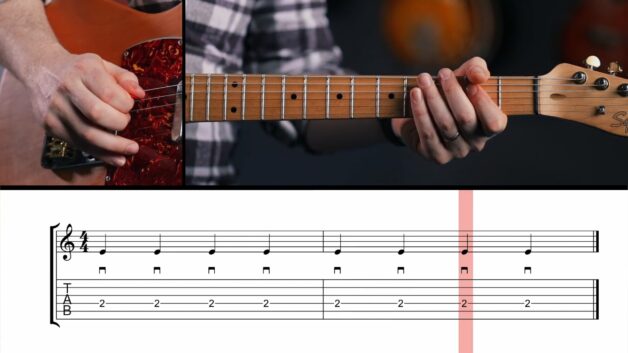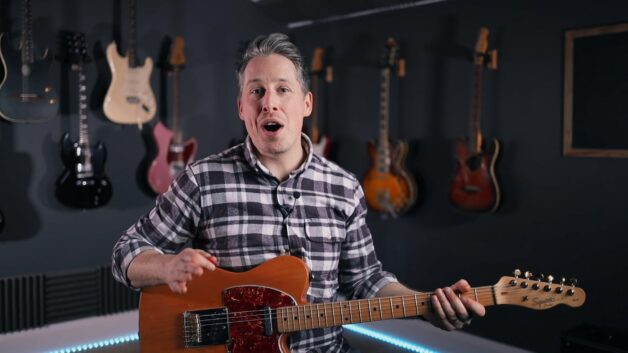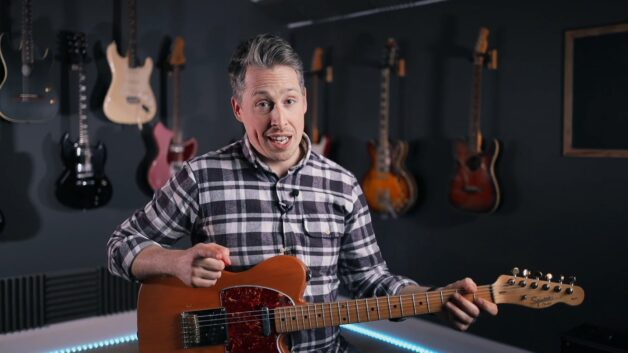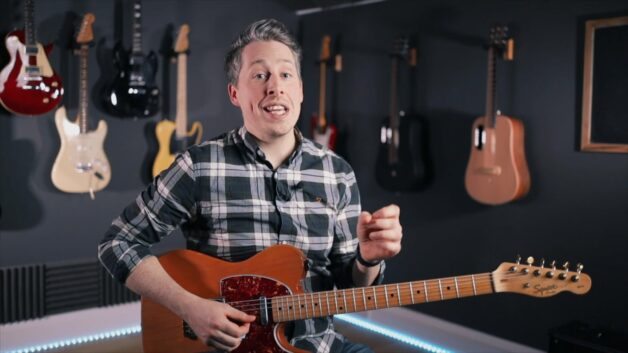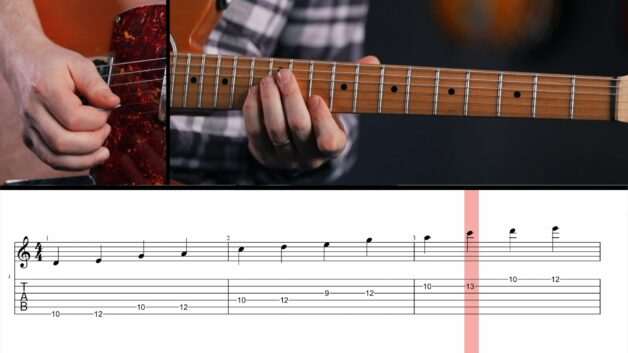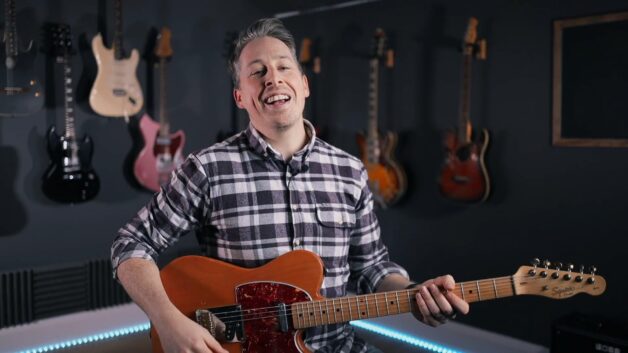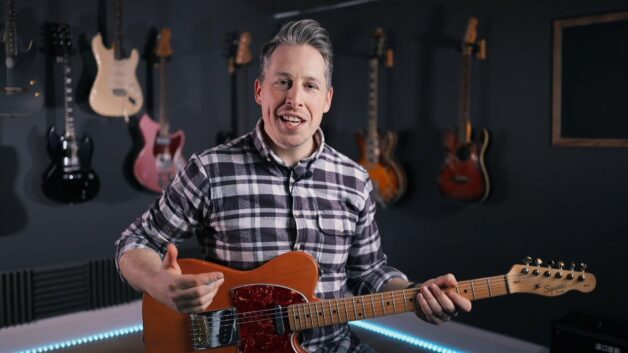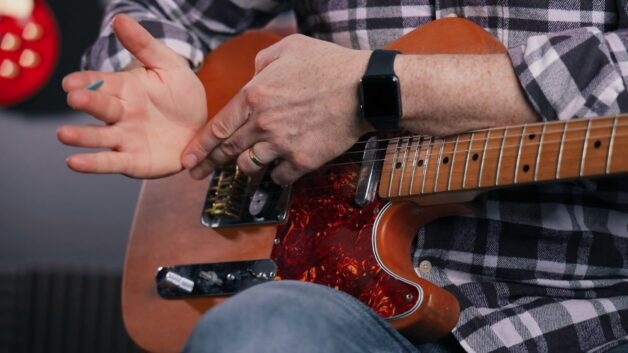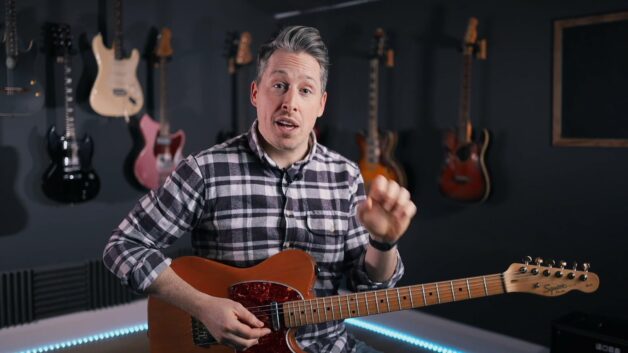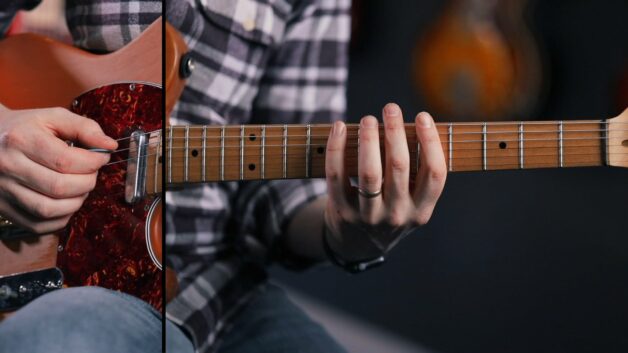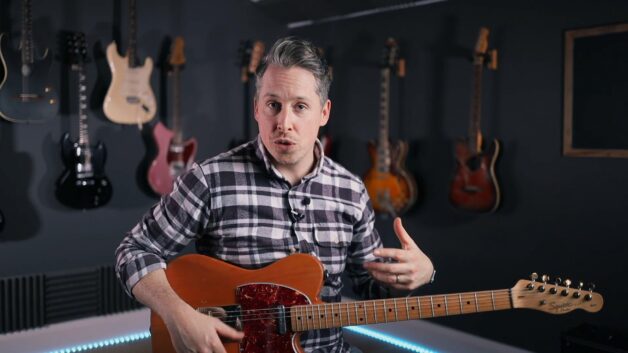Module 3 - Lesson 2
Introduction to Rock Guitar Soloing
 Julien Bitoun
Julien Bitoun
- Beginner
- Rock
-
MODULE 3
Introduction to Guitar Solos by Styles - Introduction to Blues Guitar Soloing
- Introduction to Rock Guitar Soloing
- Introduction to Jazz Guitar Soloing
Recommended songs
| Title | Album | Type | |
|---|---|---|---|
American Idiot

|
American Idiot | Guitars, Bass & Backing Track | |
Another Brick In The Wall Part Ii

|
Lead Guitar | ||
Are You Gonna Be My Girl

|
Guitar | ||
Back in Black

|
Lead Guitar | ||
Californication

|
Californication | Lead Guitar | |
Cat Scratch Fever

|
Cat Scratch Fever | Guitars, Bass & Backing Track | |
Come Together

|
Electric Guitars | ||
| Flower Power | From the Fires | Full Score | |
Gold On The Ceiling

|
El Camino | Guitars, Bass & Backing Track | |
High And Dry

|
The Bends | Guitars, Bass & Backing Track | |
Highway to Hell

|
Lead Guitar | ||
Hotel California

|
Hotel California | Electric Guitar | |
I Believe in a Thing Called Love

|
Permission to Land | Guitars, Bass & Backing Track | |
I Love Rock 'n Roll

|
Lead Guitar | ||
| It's a Long Way to the Top (If You Wanna Rock 'n' Roll) | T.N.T. | Full Score | |
Johnny B. Goode

|
Lead Guitar | ||
Knights Of Cydonia

|
Black Holes and Revelations | Guitars, Bass & Backing Track | |
My Generation

|
My Generation | Guitars, Bass & Backing Track | |
Purple Haze

|
Are You Experienced | Guitar | |
Seven Nation Army

|
Electric Guitars | ||
Smells Like Teen Spirit

|
Electric Guitars | ||
Where Is My Mind?

|
Surfer Rosa | Guitars, Bass & Backing Track | |
Wonderful Tonight

|
Slowhand | Guitars, Bass & Backing Track |
Mastering the Art of Rock Guitar Soloing for Beginners
Key Takeaways:
- Rock solos evolved from blues roots but developed their own distinctive vocabulary
- Essential techniques include bends, vibrato, hammer-ons, pull-offs, and slides
- The pentatonic scale forms the backbone of most rock soloing approaches
- Learning classic solos note-for-note builds your technical foundation
The Evolution of Rock Guitar Solos: From Blues Roots to Stadium Anthems
The rock guitar solo has carved its own path from humble blues beginnings to become a defining element of rock music. Eric Clapton’s groundbreaking work on the Blues Breakers album in 1965 marked this evolutionary turning point, introducing a more trebly attack and sustain-rich tone that distinguished rock from traditional blues phrasing.
This new approach was further developed by British invasion pioneers Jimmy Page and Jeff Beck, who stretched the boundaries of what a guitar solo could achieve. By the time David Gilmour arrived in the 70s, the rock solo had matured into a sophisticated form of musical expression that could tell a story within a song.
The 80s saw rock solos infiltrate nearly every pop recording, with session wizards like Steve Lukather adding blistering leads to countless hits. Though the grunge movement of the 90s temporarily pushed virtuosic soloing into the background, bands like the Black Crowes maintained the tradition, ensuring this essential rock element survived.
No discussion of rock soloing would be complete without acknowledging Jimi Hendrix’s revolutionary contribution. Despite countless imitators over decades, his approach to the instrument remains singularly unique – a reminder that technical proficiency and creative expression go hand in hand.
Equipment Essentials and Tone Crafting
Getting your rock solo tone right starts with understanding the core elements. While Stratocasters have been the weapon of choice for players like Hendrix and Blackmore, many beginners struggle with the single-coil pickups’ tendency to feedback at high gain settings. A Gibson-style guitar with a bridge humbucker often provides a more forgiving platform for developing your soloing skills.
Your amplifier selection matters just as much as your guitar. Look for an amp that offers good dynamic response and sustain without muddying your note definition. Many beginners make the mistake of using too much gain, which can mask sloppy technique. Start with moderate distortion that allows you to hear each note clearly while still providing enough sustain for expressive bends.
Building Your Soloing Vocabulary One Lick at a Time
Developing rock soloing skills requires methodical practice. Start by mastering the minor pentatonic scale in all five positions across the fretboard. This scale forms the foundation of countless classic solos, from AC/DC’s straightforward approach to Jimmy Page’s more elaborate expressions.
A common pitfall for beginners is attempting to play too fast before developing proper technique. Focus first on playing clean, well-articulated notes with consistent timing. Speed will come naturally as your muscle memory develops.
Learn iconic solos note-for-note, starting with more straightforward examples. Chuck Berry’s “Johnny B. Goode” intro provides an excellent starting point with its clear rhythmic pattern and manageable speed. As your confidence grows, tackle Pink Floyd’s “Another Brick in the Wall Part II” to explore how David Gilmour uses space and phrasing to create a memorable solo.
When practicing bends, use a reference pitch to ensure you’re hitting the target note accurately. Many beginners bend either too far or not far enough, resulting in out-of-tune playing. Train your ear to recognize when you’ve reached the correct pitch.
Incorporate these techniques gradually into your playing:
- Hammer-ons and pull-offs for smoother legato phrases
- Controlled vibrato that enhances notes rather than disguising poor intonation
- Slides to connect positions across the fretboard
- Strategic use of silence to create tension and resolution
Ready to embark on your rock soloing journey? With focused practice on these fundamental techniques and a deep study of the masters, you’ll develop the vocabulary needed to express yourself through beginner rock guitar soloing. Remember that even the greatest guitarists started with simple phrases – it’s not about how many notes you play, but how meaningfully you play them.

